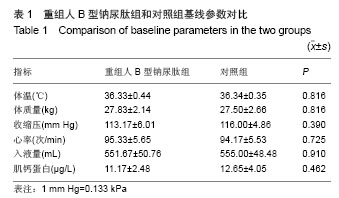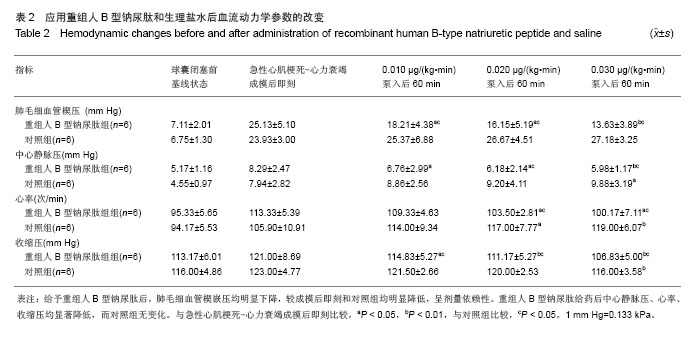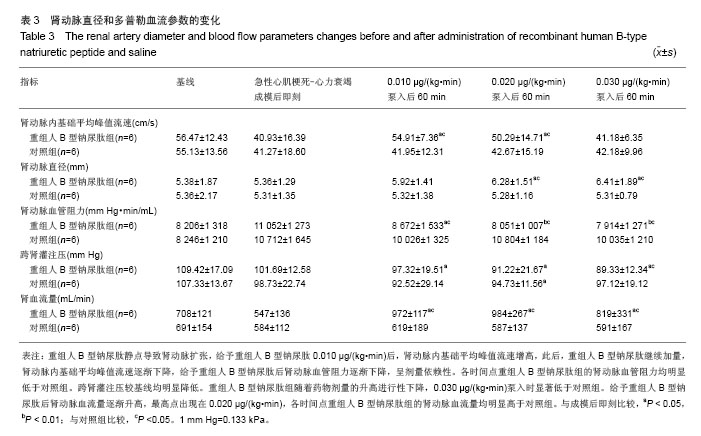| [1]重组人脑利钠肽多中心研究协作组.重组人脑利钠肽治疗心力衰竭安全性和疗效的开放性随机对照多中心临床研究[J].中华心血管病杂志,2011,39(4):305-308.
[2]O'Connor CM, Starling RC, Hernandez AF, et al.Effect of nesiritide in patients with acute decompensated heart failure. N Engl J Med. 2011;365(1):32-43.
[3]Elkayam U, Akhter MW, Singh H,et al.Comparison of effects on left ventricular filling pressure of intravenous nesiritide and high-dose nitroglycerin in patients with decompensated heart failure.Am J Cardiol. 2004;93(2):237-240.
[4]张晶,傅向华,贾辛未,等.重组人B型利钠肽治疗老年急性前壁心肌梗死合并收缩性心力衰竭患者的疗效和安全性[J].中国老年学杂志,2010,30(4):438-440.
[5]Charles CJ, Jardine DL, Rademaker MT,et al.Low dose B-type Natriuretic Peptide Raises Cardiac Sympathetic Nerve Activity in Sheep.Am J Physiol Regul Integr Comp Physiol. 2014. [Epub ahead of print]
[6]Hu G, Huang X, Zhang K,et al.Anti-inflammatory Effect of B-Type Natriuretic Peptide Postconditioning During Myocardial Ischemia-Reperfusion: Involvement of PI3K/Akt Signaling Pathway.Inflammation. 2014. [Epub ahead of print]
[7]Edvinsson ML, Uddman E, Edvinsson L,et al.Brain natriuretic peptide is a potent vasodilator in aged human microcirculation and shows a blunted response in heart failure patients.J Geriatr Cardiol. 2014;11(1):50-56.
[8]Demerath T, Staffel J, Schreiber A,et al.Natriuretic peptides buffer renin-dependent hypertension.Am J Physiol Renal Physiol. 2014. [Epub ahead of print]
[9]Wang S, Qu X, Qu Y,et al.The effect of B-type brain natriuretic peptide on patients with acute decompensated heart failure coexisting with lung cancer: a randomized controlled clinical trial.Pharmazie. 2014;69(3):212-216.
[10]Campbell KL, Johnson DW, Bauer JD,et al.A randomized trial of sodium-restriction on kidney function, fluid volume and adipokines in CKD patients.BMC Nephrol. 2014;15:57.
[11]Thireau J, Karam S, Roberge S,et al.β-Adrenergic blockade combined with subcutaneous B-type natriuretic peptide: a promising approach to reduce ventricular arrhythmia in heart failure?Heart. 2014;100(11):833-841.
[12]Sackner-Bernstein JD, Skopicki HA, Aaronson KD.Risk of worsening renal function with nesiritide in patients with acutely decompensated heart failure.Circulation. 2005;111 (12):1487-1491.
[13]Wu VC, Wu CH, Huang TM,et al.Long-term risk of coronary events after AKI.J Am Soc Nephrol. 2014;25(3):595-605.
[14]Cravedi P, Remuzzi G.Treating the kidney to cure the heart. Kidney Int Suppl. 2008;(111):S2-3.
[15]Zhang J, Fu X, Jia X,et al.B-type natriuretic peptide for prevention of contrast-induced nephropathy in patients with heart failure undergoing primary percutaneous coronary intervention.Acta Radiol. 2010;51(6):641-648.
[16]Arora S, Clarke K, Srinivasan V, et al.Effect of nesiritide on renal function in patients admitted for decompensated heart failure.QJM. 2007;100(11):699-706.
[17]Chen HH, Anstrom KJ, Givertz MM,et al.Low-dose dopamine or low-dose nesiritide in acute heart failure with renal dysfunction: the ROSE acute heart failure randomized trial. JAMA. 2013;310(23):2533-2543.
[18]Spiliopoulos S, Guersoy D, Koerfer R,et al.B-type natriuretic peptide therapy in total artificial heart implantation: Renal effects with early initiation.J Heart Lung Transplant. 2014. [Epub ahead of print]
[19]Chow SL, Peng JT, Okamoto MP,et al.Effect of nesiritide infusion duration on renal function in acutely decompensated heart failure patients.Ann Pharmacother. 2007;41(4):556-561.
[20]Gottlieb SS, Stebbins A, Voors AA,et al.Effects of nesiritide and predictors of urine output in acute decompensated heart failure: results from ASCEND-HF (acute study of clinical effectiveness of nesiritide and decompensated heart failure).J Am Coll Cardiol. 2013;62(13):1177-1183.
[21]Elkayam U, Janmohamed M, Hatamizadeh P,et al.Impact of acute serum creatinine elevation in patients treated with nesiritide.Clin Cardiol. 2009;32(4):215-219.
[22]Witteles RM, Kao D, Christopherson D,et al.Impact of nesiritide on renal function in patients with acute decompensated heart failure and pre-existing renal dysfunction a randomized, double-blind, placebo-controlled clinical trial.J Am Coll Cardiol. 2007;50(19):1835-1840.
[23]Mentzer RM Jr, Oz MC, Sladen RN,et al.Effects of perioperative nesiritide in patients with left ventricular dysfunction undergoing cardiac surgery:the NAPA Trial.J Am Coll Cardiol. 2007;49(6):716-726.
[24]Hauptman PJ, Schnitzler MA, Swindle J,et al.Use of nesiritide before and after publications suggesting drug-related risks in patients with acute decompensated heart failure.JAMA. 2006; 296(15):1877-1884.
[25]张晶,傅向华,贾辛未,等.超选左前降支微血栓微球混悬液分次灌注构建小型猪急性心肌梗死后缺血性心力衰竭组织工程学模型[J].中国组织工程研究与临床康复,2010,14(20):3691-3695.
[26]张晶,傅向华,贾辛未,等. 小型猪急性心肌梗死后心力衰竭模型的构建[J]. 中国实验动物学报,2010,18(1):33-36.
[27]Burger AJ.A review of the renal and neurohormonal effects of B-type natriuretic peptide.Congest Heart Fail. 2005;11(1): 30-38.
[28]Baxter GF.The natriuretic peptides.Basic Res Cardiol. 2004; 99(2):71-75.
[29]Tremblay J, Desjardins R, Hum D, et al.Biochemistry and physiology of the natriuretic peptide receptor guanylyl cyclases. Mol Cell Biochem. 2002;230(1-2):31-47.
[30]Firth JD, Raine AE, Ledingham JG.Raised venous pressure: a direct cause of renal sodium retention in oedema?Lancet. 1988;1(8593):1033-1035.
[31]Riter HG, Redfield MM, Burnett JC,et al.Nonhypotensive low-dose nesiritide has differential renal effects compared with standard-dose nesiritide in patients with acute decompensated heart failure and renal dysfunction.J Am Coll Cardiol. 2006;47(11):2334-2335.
[32]Elkayam U, Ng TM, Hatamizadeh P, et al.Renal Vasodilatory Action of Dopamine in Patients With Heart Failure: Magnitude of Effect and Site of Action.Circulation. 2008;117(2):200-205. |



.jpg)